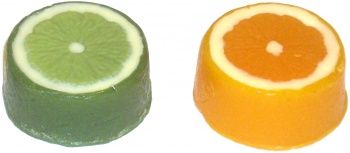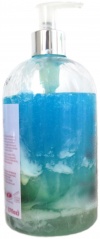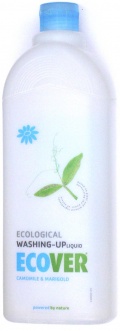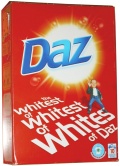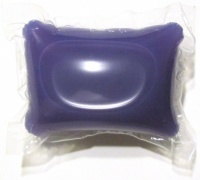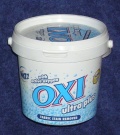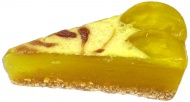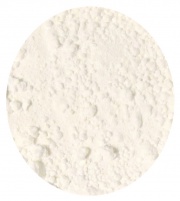Detergent
Detergents are various substances that remove dirt by putting it into suspension in water. Detergent molecules attach themselves to both the dirt and the water.
Washing up liquid
Soft soap. Probably the fastest acting detergent, but one of the least powerful. Removes many types of dirt very quickly. Dries skin.
Washing up liquid can be used for urgent clothes washing, it can give a quick refresh wash in a few minutes. But it can't remove all types of dirt, and is not adequate for regular use.
Don't use washing liquid in washing machines, it creates a greasy film that makes the machine pong after a while.
Using washing liquid to clean carpets isn't a great idea for a few reasons.
- It leaves a slight sticky residue that attracts further dirt
- It isn't as effective as carpet cleaning solutions.
- It isn't as colour safe as carpet cleaning solutions.
- Carpet cleaning without dirty water extraction leaves the dirt in the carpet
Washing liquid can be used as a lubricant for sash window runners and for driving stiff screws.
Washing liquid can be wiped onto just dried oil-based paint to prevent sticking and allow prompt reassembly and smoooth running - and let you close the front door after painting (once the paint surface is dry).
Low cost washing liquids contain less detergent and are thickened with salt. Which is better value is such a trivial question that its seen long debates on usenet.
Washing up liquid removes the protein based gloop that tends to build up in dishwashers (dishwasher powder doesn't). Add a little to the machine at the start to help keep it clean & clear, and non-whiffy.
Liquid soaps
More or less all products sold as liquid soaps are based on a non-soap detergent called sodium lauryl ethyl sulphate, aka sodium laureth sulphate or SLES. They also have various additives (preservatives, colour, perfume, fat, sometimes oil & emulsifier). SLES is a nearly universal low cost skin cleaning detergent, and a known very slight skin irritant. Nearly all brands of skin cleaner contain it, regardless of purported quality.
Such products are ill suited to general cleaning since many contain oils and fats, most are a relatively high price per litre, and they're somewhat mild cleaners.
There have also been safety concerns voiced over SLES products, concerning its contamination with the toxic 1,4-dioxane. The significance of this is still debated, and misinformation is easy to find on the topic. The related compound sodium lauryl sulphate, or SLS, is not so affected, but its more irritant.
Shampoos
Much the same constitutents as liquid soaps, with on average more fat content. Extras are often added to change its appearance. Anti dandruff shampoos contain an antifungal, such as selenium sulphide. Conditioners also contain oil.
Ecover washing up liquid
- Based mostly on plant products.
- Not as irritant to skin as sodim laureth sulphate
- Can strip emulsion if soaked
- Non toxic
- Can be used as body wash and shampoo
- Add a little oil to make a mildly conditioning shampoo and for dry skin
For people with skin irritated by washing powder its possible to use ecover washing up liquid to replace most of the washing powder when clothes washing. Use one tablespoonful of each per load, don't overdo it as it doesn't contain anti foaming agents, and use conventional powders for other washes to prevent muck buildup in the machine. If you misjudge the amount to use, the froth monster will come after you.
Laundry
Washing powder
Much more powerful than washing liquids, effective degreasing with hot water. Linear alkylbenzenesulfonates replace the soap in earlier powders. Alkaline, drying and somewhat irritant to skin.
Biological powders also contain enzymes to improve their cleaning action at 40C, but the enzymes stop working at higher temps. Washing powders also contain various additives such as bleach, water softener, blue dye to counter yellowing, powdered cardboard filler, alkali and generally an array of stain removers.
An overnight soak with bio powder can remove a wide range of stains and organic materials, so is a good first line of treatment for unknown stains.
Biological washing powder is one of the ultimate cleaners in terms of its ability to digest a very wide range of dirt types. However to destroy them all takes days of soaking in a warm solution. Occasionally worth doing for dirt that has resisted all other forms of attack.
Washing powder tablets
These are just washing powder, but they take time to dissolve. This gives them less clothes cleaning time per wash than powders.
If placed in the soap drawer, some fail to dissolve in time, giving a poor wash, and the clothes are left with a residue of irritant washing powder due to being rinsed in weak detergent solution instead of clean water. If tablets are used its best to put them in the drum, where longer immersion and agitation give them time to dissolve.
Liquid
Liquid laundry detergents lack the cardboard fibre filler found in powders, so muck builds up in washing machines faster.
Liquid detergent sachets are sometimes eaten by small kids with horrible results. Alkaline liquids cause burning and dangerous swelling of mouth & throat, and the medical treatment is no fun either.
Dishwasher detergent
Powder
- Strong alkali & detergent.
- Require hot water to work effectively.
- The most irritant detergent to skin, skin contact is best avoided.
- The detergent gradually attacks some types of glass, making it go cloudy in time.
Tablet
3 in 1 Tablets contain detergent, salt and rinse aid all in one block. The formulation attempts to time the release of these to coincide with the required stages of washing. This timing isn't accurate, but seems to be adequate for non-fussy users.
Although the blocks contain some salt, its release can't be timed effectively, and the salt never flows through the machine's ion exchanger. Don't neglect filling the machine's ion exchanger with salt, unless you live in a totally soft water area.
5 in 1 tablets have added stain removers, for what its worth.
The author has never found any difference in result between the different brands, despite the advertising, all brands seem to be just as effective.
Wonder / miracle / magic cleaners / stain removers
Some are just ordinary laundry soap, or laundry soap & phosphates.
A lot of these contain oxygen based laundry bleach. These often feature 'oxi' in the name. These contain chemicals that produce hydrogen peroxide when used. H2O2 bleaches dirt, but unlike chlorine bleaches it doesn't affect colours.
The peroxide producing chemical used is often sodium perborate or sodium percarbonate.
Stain specific spot cleaners
Small bottles of chemicals for removing specific stains are not detergents in the usual sense of the word, and not covered here.
Soap (bar)
Most bar soaps, washing up liquid and washing powder are real soaps, the others here are more modern soapless detergents. All soaps are made by reaction between an alkali and fat or oil, and unless the soap batches are carefully hand adjusted (which is not usual practice), the end result inevitably contains either excess fat or excess caustic alkali.
Soaps for skin cleaning are superfatted, meaning they contain some unreacted fat and very little free alkali. To some extent the fat counters soap's tendency to dry skin. The fat content makes bar soap unsuitable for household cleaning. Soaps also tend to leave scum and spots on baths & showers, more so than other detergents.
The various different types of bar soap are made from different fats, and have differing colour & perfume added. Clear soaps have some additional processing.
In developing countries a wider variety of soaps are found, with bars for household cleaning, shampooing, laundry etc, but these are not so often seen in Britain. If you want to find them, look in Indian supermarkets. They're often sold in big bars a foot or so long, and you slice off a new soap bar when you need one. The colours indicate which type of soap it is. These are all based on soaps rather than more modern detergents. They make very economical cleaners, but aren't as effective as modern cleaning products.
Soaps may be used for cleaning gold and silver jewellery.
Sugar soap
Sodium phosphate, a cleaner that has nothing to do with sugar, and is definitely not edible.
Used primarily to clean paintwork. Other detergents can be used instead if rinsed off.
Sugar soap removes nicotine staining, but its slow going.
Washing painted walls is sometimes sufficient to rejuvenate them and delay the need to re-paint.
